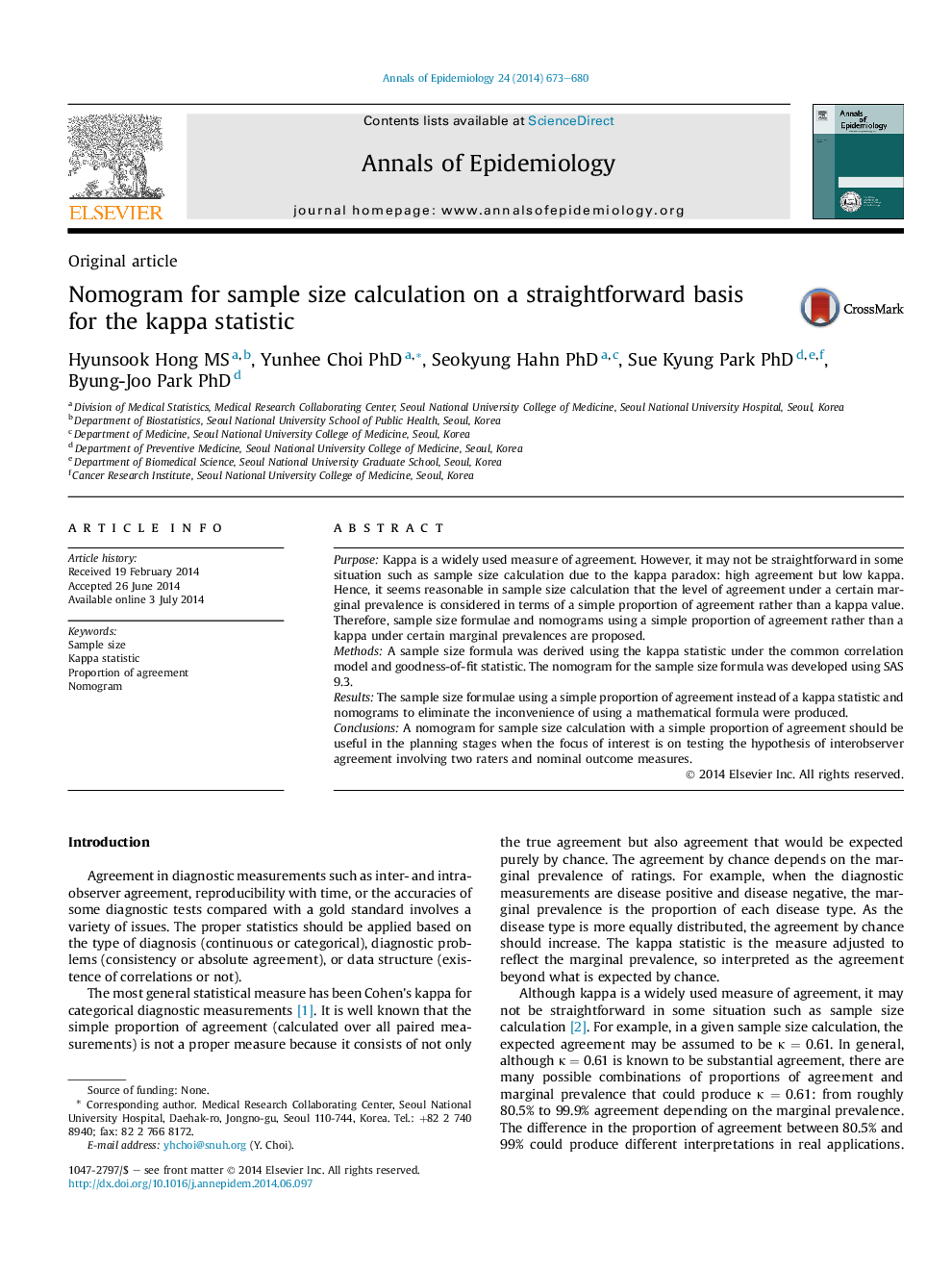| Article ID | Journal | Published Year | Pages | File Type |
|---|---|---|---|---|
| 6147832 | Annals of Epidemiology | 2014 | 8 Pages |
PurposeKappa is a widely used measure of agreement. However, it may not be straightforward in some situation such as sample size calculation due to the kappa paradox: high agreement but low kappa. Hence, it seems reasonable in sample size calculation that the level of agreement under a certain marginal prevalence is considered in terms of a simple proportion of agreement rather than a kappa value. Therefore, sample size formulae and nomograms using a simple proportion of agreement rather than a kappa under certain marginal prevalences are proposed.MethodsA sample size formula was derived using the kappa statistic under the common correlation model and goodness-of-fit statistic. The nomogram for the sample size formula was developed using SAS 9.3.ResultsThe sample size formulae using a simple proportion of agreement instead of a kappa statistic and nomograms to eliminate the inconvenience of using a mathematical formula were produced.ConclusionsA nomogram for sample size calculation with a simple proportion of agreement should be useful in the planning stages when the focus of interest is on testing the hypothesis of interobserver agreement involving two raters and nominal outcome measures.
